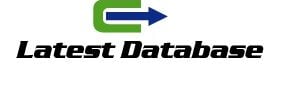Building a Bridge for Seamless Communication
In today’s digital age, a website acts as your virtual storefront, a platform for showcasing your services and fostering connections. An essential element of any successful website is a functional contact form. But what happens to those valuable inquiries once submitted? This is where a contact form database comes in – a dedicated space to organize and manage those interactions.
This article delves into
The world of contact form databases, exploring their benefits, the database design process, and implementation considerations. By the end, you’ll be equipped with the knowledge to create a robust system for capturing and nurturing leads.
Why Use a Contact Form Database?
Imagine a mailbox overflowing with unread letters; that’s essentially what happens without a contact form database. Here’s how a Telemarketing and Lead Generation dedicated system streamlines communication:
Organization: Submissions are neatly categorized, eliminating the risk of losing messages or missing follow-up opportunities.
Accessibility: Easily access and review
Inquiries from any authorized device, ensuring prompt responses.
Data Analysis: Gain valuable insights into user behavior by analyzing trends in contact form submissions.
Improved Customer Service
Personalize responses by referencing past interactions stored in the database.
Marketing Potential: With consent, leverage contact information for targeted marketing campaigns.
Designing Your Contact Form Database
Building a secure and efficient database requires careful planning. Here’s a breakdown of the key steps:
Identify Data Requirements: Define the information you want to capture from your contact form. Common fields include name,
Email address phone number
subject of inquiry, and the actual message. Consider additional fields based on your specific needs, such as company name or project details.
Choose Your Database Platform:
Popular options include MySQL, PostgreSQL, and Microsoft SQL Server. Consider factors like ease of use, scalability, and security when making your choice.
Create the Database Schema
This blueprint defines the structure of your Silence the Ring: Effective Strategies to Block Cold Calls database, including tables, columns (data fields), and data types (text, numbers, etc.). Here’s a sample schema for a contact form database.



